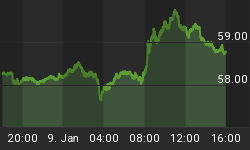In the last few years, I have noticed there has been an extreme lack of longer-term performance variation across different broad-based categories of domestic stock funds. No matter which category of fund you might have held over the last 5 years, the average result has generally been sub-par. As a consequence, there has been a remarkable diminishment in one's ability to pick out and hold winning categories while trying to avoid holding underperforming ones.
For example, thru Oct. 15, 2010, the benchmark S&P 500 Index returned 2.0%. (Note: all returns mentioned are annualized returns over the prior 5 years.) And those who invested in the average diversified international fund only did slightly better than those who invested domestically, earning 4.0%.
So where might have one gotten the best or worst stock fund returns? The best US diversified stock category to get positive returns over 5 years was the Mid-Cap Growth category at 4.1%. A few categories of funds focused on narrow, non-diversified segments of the market came in better such as, for example, those specializing in natural resources at 7.9% and precious metals at 23.2%. And those that invest primarily in emerging markets, Latin America, and the Pacific region averaged 13.5, 23.0, and 7.6. respectively. However, such investments all would have entailed a higher degree of risk.
The worst main US diversified average returns came in the Large Value category at 0.6. Thus, the degree of difference between the best main US category and the worst is a mere 3.5%. (4.1 vs 0.6).
This turns out to have been a far cry from the situation for investors who bought and held their funds throughout most of the first 7 or so years of the past decade when there were often huge differences between the best and the worst performing broad-based categories.
For example, back on Mar. 31, 2005, you would have gotten +15.1% over the prior 5 yrs. in Small Value funds. Compare this to a minus 10.2 average return in the Large Growth category. That's a 25.3% difference per year! (If you held a S&P 500 Index fund, your 5 yr. return would have been minus 3.7%.) And had you invested in certain specialized funds, such as Real Estate, Gold, or Science and Technology, the opportunities to either excel or do badly would have been much greater.
So why was it that fund category selection might have made a big difference in how well fund investors did earlier in the decade but hardly so over the last several years?
Our research shows that during both the 2007-2009 and 2000-2002 bear markets, comparative performance across all fund categories became more and more constricted. As might be expected, investors sold off virtually all categories of funds. However, they appear to have sold off the previously best performing categories the most. Why? Perhaps it was in an effort to protect whatever profits still remained. Or, they may have recognized these funds had become too "frothy" or overvalued. Or, maybe they simply became scared that the funds that had performed best for them were now the most likely to lose money for them in a serious market decline.
Whatever the cause, this resulted in a "flattening" of category returns as the best performers started to lose their advantage over the worst. When no one category becomes barely any better than another no matter which one an investor chooses, almost all investors just get about the overall market return.
Back in 2003, when a bull market returned, it appeared that investors no longer craved the prior winning categories, which they continued to sell. Instead, those who did start investing again sought out the prior bull market's "undervalued" categories. As a result, the types of funds that outperformed the most during the ensuing relatively long rising market were the ones that had been underperformers during the preceding bull market. The differences between the best and worst performing categories increased substantially.
We believe we may now be transitioning from relatively undifferentiated category returns to more opportunity to outperform through your category selections. While the constriction of bear market returns is still visible in recent performance data, there appears to be the beginning of a trend toward somewhat less constriction which seemed to bottom at a meager 1.4% difference between best vs worse at the end of June '09. While the current 3.5% difference still, admittedly, has a long way to go to reach the big differences in 5 year category performance shown during the bullish times earlier in the decade, it now appears that the differences are widening as we move further past the March '09 bear market low.
If you believe as I do that the we are still likely in the early stages of a longer-term rising market that started in Mar. '09, the following actions could prove to increase your returns in the years ahead:
-
Since the fund categories that outperformed the most during the '03-'07 bull market were the ones that had lagged during the pre-2000 bull market, the start of a new bull market would appear to be an opportune time to invest in stock fund categories that are the current trailing categories over the last 5 yrs. Our data show that such categories did considerably better throughout the entire bull market than the ones that had done best in the prior bull market.
-
Interestingly, our data also show that the opportunities for long-term outperformance afforded by selecting undervalued categories decreased substantially as the '03-'07 bull market matured. This would seem to suggest that those who act early upon recognizing what appears to be a consistently rising market will eventually enjoy better returns than those who wind up waiting too long before making new investments, or who move into relatively better performing past categories rather than focusing on the currently most underperforming ones.















